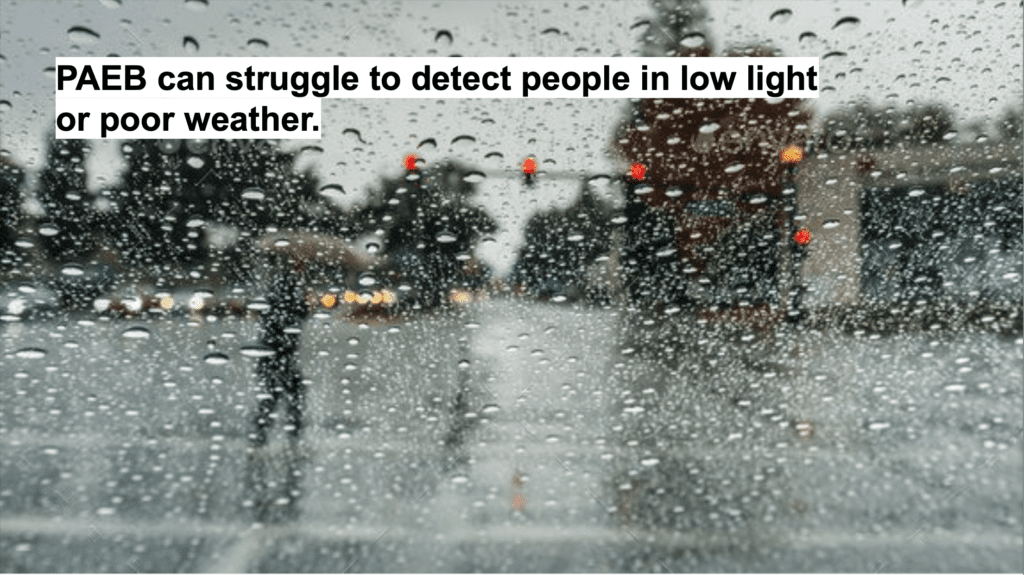June 8th is the deadline for public comment on NCAP safety ratings
It’s no secret: pedestrian fatalities from motor vehicles are increasing. If you tuned into our May webinar titled Vehicle Safety for Pedestrians 101, you saw the same figures that we did from Advocates for Auto and Highway Safety President, Cathy Chase. The data shows that from 2020 to 2021, the number of people killed by vehicles rose by twelve percent.

The NCAP (New Car Assessment Program) model, which originated in the United States from a group of colleagues at NHTSA (the National Highway Traffic and Safety Administration) has significantly improved protections for those inside the vehicle. According to David Ward, who is the Executive President of Towards Zero Foundation, when looking at EuroNCAP, these improvements to occupant protections have led to a 50% decrease in roadway deaths over the last twenty years. The NCAP model has been the largest contributor to this decrease.
Now is the time to bring this approach to people outside of vehicles.
Watch the full webinar here:
Why have we been beating the drum for this NCAP update?
As we know, technology moves fast and it’s no different for vehicle safety technologies. With other NCAP’s around the world, it’s standard practice to update the rating system every five years to keep pace with rapid technological advancements. With the United States NCAP not being updated for nearly ten years, it’s clear that we’ve fallen behind. Would you keep the same cell phone for ten years without upgrading?
David Ward points to the idea that not every vehicle deserves a five-star rating the same way not everyone deserves a gold medal. If every vehicle is given a five-star rating, the scale may be too lenient and need to be updated. Additionally, Sindhu Bharadwaj, Program Manager of Policy at NACTO, shared that NHTSA is including the safety of those outside the vehicle for the first time this year in the NCAP safety rating. This is a major transition from what we’ve seen with past NCAP ratings – where vehicles are rated solely on how it protects those inside the vehicle.
Outside of the proposed NCAP update, there are also calls to implement FMVSS (Federal Motor Vehicle Safety Standards) which were echoed during our webinar from panelists Cathy Chase and David Ward. Federal Safety Standards are governmental regulations that would make safety features like rearview cameras and Automatic Emergency Braking standards in vehicles rather than “upgrades” the consumer has to pay for. By making these safety features standard in all vehicles it would create equity during the car buying process and increase accessibility to safer vehicles.
What are the issues this NCAP update covers?
Our panelists commended NHTSA for taking initial steps to ensure vehicles are safer for people outside cars. However, all agreed that more needs to be done, both in the NCAP update and beyond.
One critical improvement is testing for PAEB to detect pedestrians in low light or poor visibility. Studies have shown that current Automated Emergency Braking can also struggle to detect People of Color which further increases the probability a Person of Color or an individual with darker skin will be struck by a vehicle.

Data shows these individuals are more likely to live in communities that already face pedestrian fatalities from vehicles at disproportionate rates due to inadequate infrastructure and accessibility for walking or rolling. Updates to the rating system through enhanced testing will address some of these inequities.
There are other important safety considerations missing as well. For example, the testing of Automatic Emergency Braking for cyclists is lacking from this update. Which raises an issue as to whether they will also test for detection of those in wheelchairs. Although a reconsideration is proposed for 2025, this omission leaves America’s NCAP lacking when compared with other global NCAP models and leaves too many at risk on our streets.
Reducing pedestrian fatalities is not something ADAS technologies can fix on its own. We need robust updates to the size, weight, and visibility of vehicles, which is something NHTSA can take on through its Federal Motor Vehicle Safety Standards. Even if communities do their part to reduce speeds and other traffic calming measures, the root of the problem needs to be addressed: vehicles getting larger and heavier and often lack adequate systems to pedestrians.
Join our next webinar June 7th! Register here.
Additional Resources:
Additional Resources: